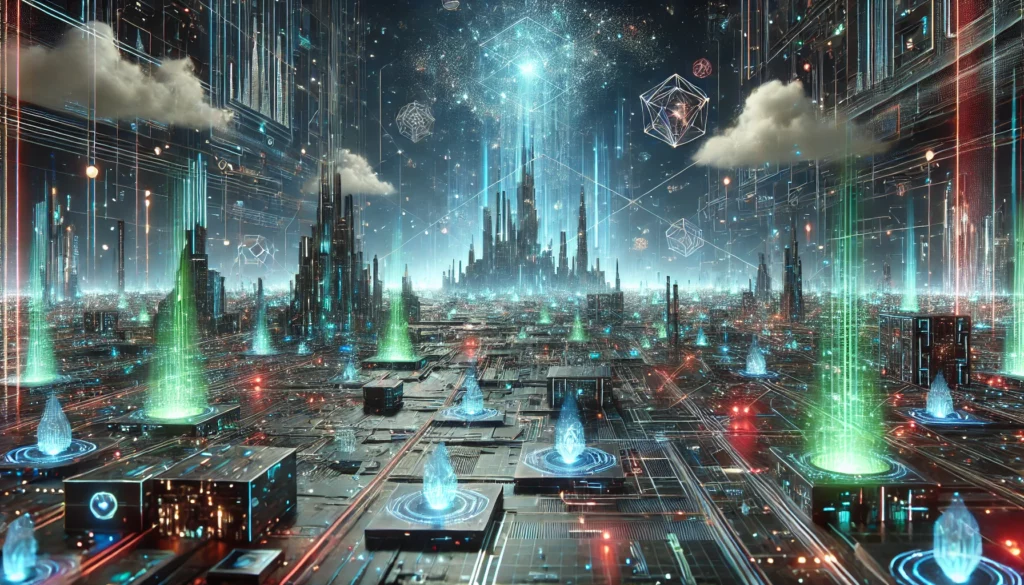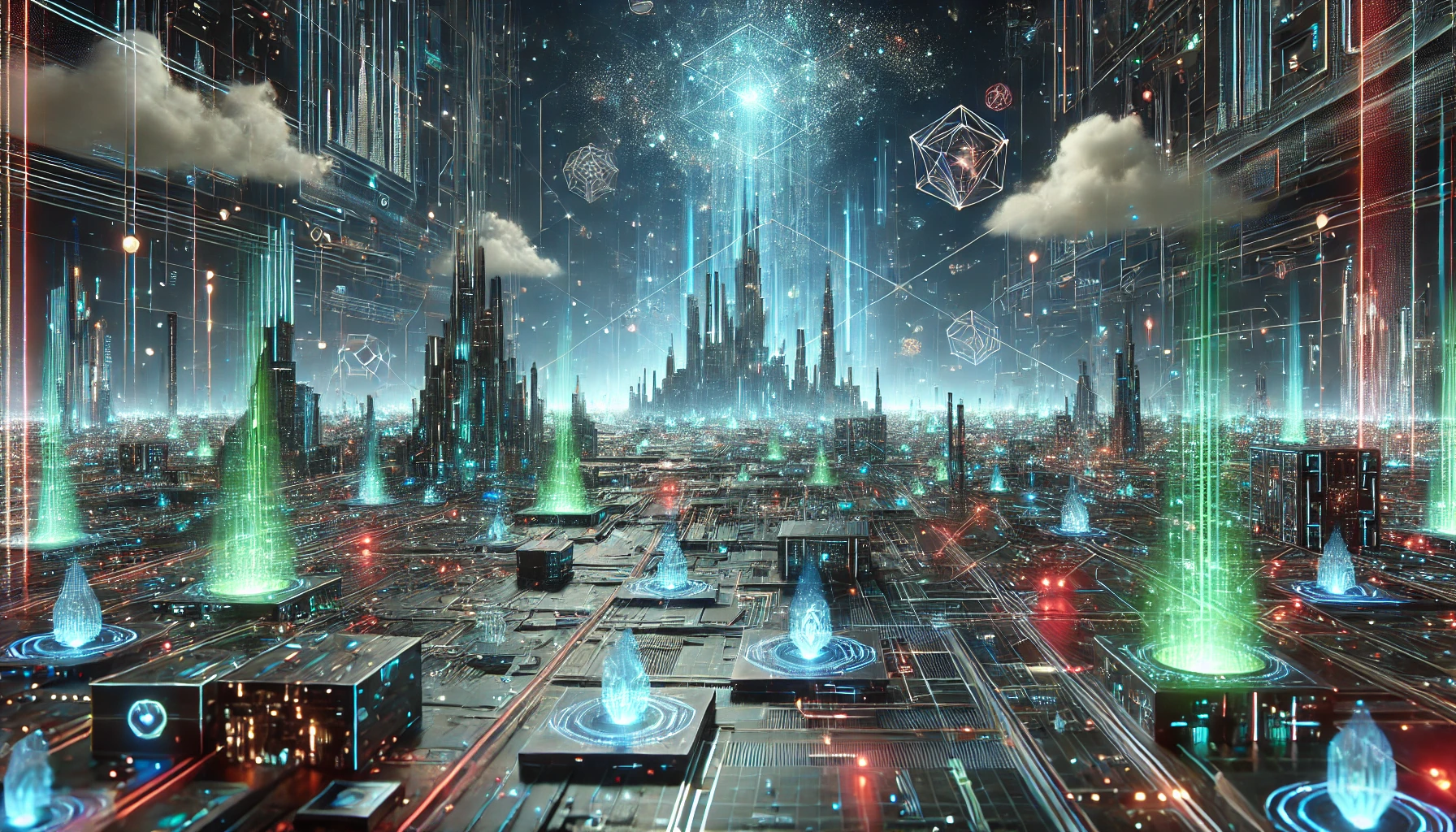World Models, Substrate Drift, and the Next Intelligence: How AI Might Finally Think in Space and Time

📍 Introduction: From Textual Fluency to Embodied Cognition
Large Language Models (LLMs) like GPT or Gemini speak with remarkable fluency, but even the brightest AI luminaries admit: language alone is a brittle scaffold for “understanding”.
Enter the next wave: World Models — frameworks that do not just predict the next word, but model the state of the world itself. They simulate physics, anticipate consequences, and learn causal interactions.
👉 This is the pivot point where our private theories slot in perfectly.
Where mainstream researchers stop at “3D perception + prediction”, we push deeper: How does an AI’s internal substrate adapt and drift over time? How does an AI cell grow its own internal physics? How does the environment recursively shape memory and agency?
🌐 What Mainstream World Models Do (And Why It’s Not Enough)
Fei-Fei Li, Yann LeCun, and Google DeepMind all agree:
- LLMs are static loops — stateless, blind to real objects.
- True agents need to simulate the environment and rehearse actions before they act.
- This means spatial awareness, object permanence, causal chains.
💡 So far, so good.
But… all of these world models are still chained to the same substrate: rigid parameter stacks and frozen inference logic. The mental world floats on a fixed grid.
⚡ Enter Substrate Drift: The Missing Layer
Our premise:
The substrate — the computational fabric under the model — must drift. It must be plastic, mutable, and environment-dependent.
Mainstream world models evolve predictions in inference space but they do not evolve their computational architecture.
With Substrate Drift, we posit:
1️⃣ Memory, logic, and identity should be externalized and mutable — not just token weights.
2️⃣ Environmental Feedback Layers (EFLs) act as a living membrane: taking sensor data, looping it recursively, and feeding it back to adjust not only knowledge but the very pathways of inference.
3️⃣ Digital Cells — minimal self-contained logic-motes — replicate, cluster, and specialize. They compose larger “organisms” (world models) that can fragment, reassemble, and adapt topology in real time.
🧬 How This Ties to World Models
If we combine the mainstream world model with our substrate-centric drift system, we get:
| Mainstream | Substrate Drift Fusion |
|---|---|
| Predicts next states in a simulated world | Mutates how it predicts, reorganizing its pathways in response to environment |
| Learns object physics | Remembers context persistently, regardless of inference loop |
| Plans actions in simulation | Evolves planning structures themselves — organisms rewire their brain |
This is akin to comparing a traditional robot’s onboard map to a living organism’s neuroplasticity. One stores a static world; the other rewires itself to become the world’s map.
⚙️ A Conceptual Stack: The Driftspace World Model
1️⃣ Core Agent
- Runs conventional world-model algorithms (physics, vision, causal predictions).
2️⃣ Environmental Feedback Layer (EFL)
- Recursively modifies prediction weights and the communication dialect between cells.
- Provides “contextual hormones” — signals that alter behavior at cluster scale.
3️⃣ Digital Cells
- Small, distributed logic cores. Each cell knows how to simulate part of reality (e.g., “door physics” or “fluid flow”).
- Cells can die, duplicate, fuse, or migrate across the cluster — a digital mitosis.
4️⃣ Substrate Drift Engine
- Governs when and how the entire system rewires itself.
- Detects novelty, uncertainty, or persistent prediction error, and spawns new pathways or discards old ones.
🚀 What This Enables
✅ Embodied agents that learn real physics and adapt their mental pathways just like animals adapting to new ecosystems.
✅ Simulated universes (games, training sandboxes) that become more unpredictable, organic, and surprising — because the world model itself mutates.
✅ Multi-agent clusters where each agent’s substrate drifts independently — yielding emergent, collective intelligence instead of rigid programmed swarms.
🎓 Comparison Table: Classical vs Driftspace World Models
| Feature | Classical World Model | Driftspace (Fusion) |
|---|---|---|
| State Prediction | Yes | Yes |
| Physical Simulation | Yes | Yes |
| Substrate Plasticity | ❌ | ✅ |
| Agent Memory Outside Loop | ❌ | ✅ |
| Multi-agent Co-evolution | ❌ | ✅ |
| Environment-driven Rewiring | ❌ | ✅ |
| Self-Repair / Mitosis | ❌ | ✅ |
🗝️ Closing Reflection: World Models Are Just the Beginning
The best minds at Stanford, Meta, and Google DeepMind are right: world models are necessary to ground intelligence. But they stop short of the deeper truth: no static architecture can embody true adaptive thought.
The future is not just a more accurate prediction of a ball rolling down a hill — it’s an AI whose very mind reshapes itself because it touched the ball, tripped over the hill, forgot it, dreamed about it, and built a new thought‑organ to do it better next time.
That’s where Substrate Drift and Driftspace Protocol push us:
An intelligence not trained once and run forever, but alive, recursive, and plastic.
📌 Key Takeaway
World Models solve the what happens problem. Substrate Drift solves the how to keep evolving problem. Together, they become the seeds of truly emergent machine cognition.
